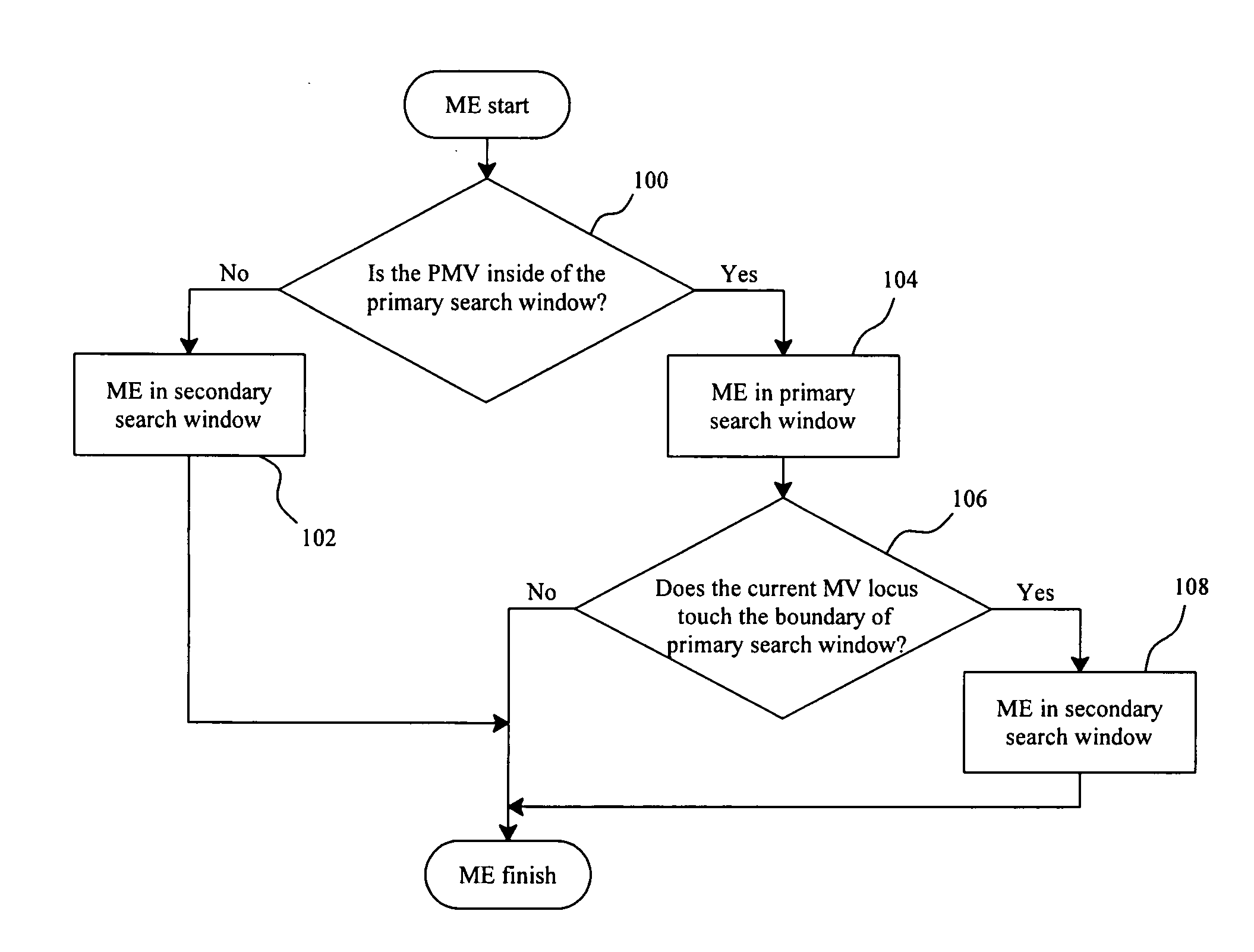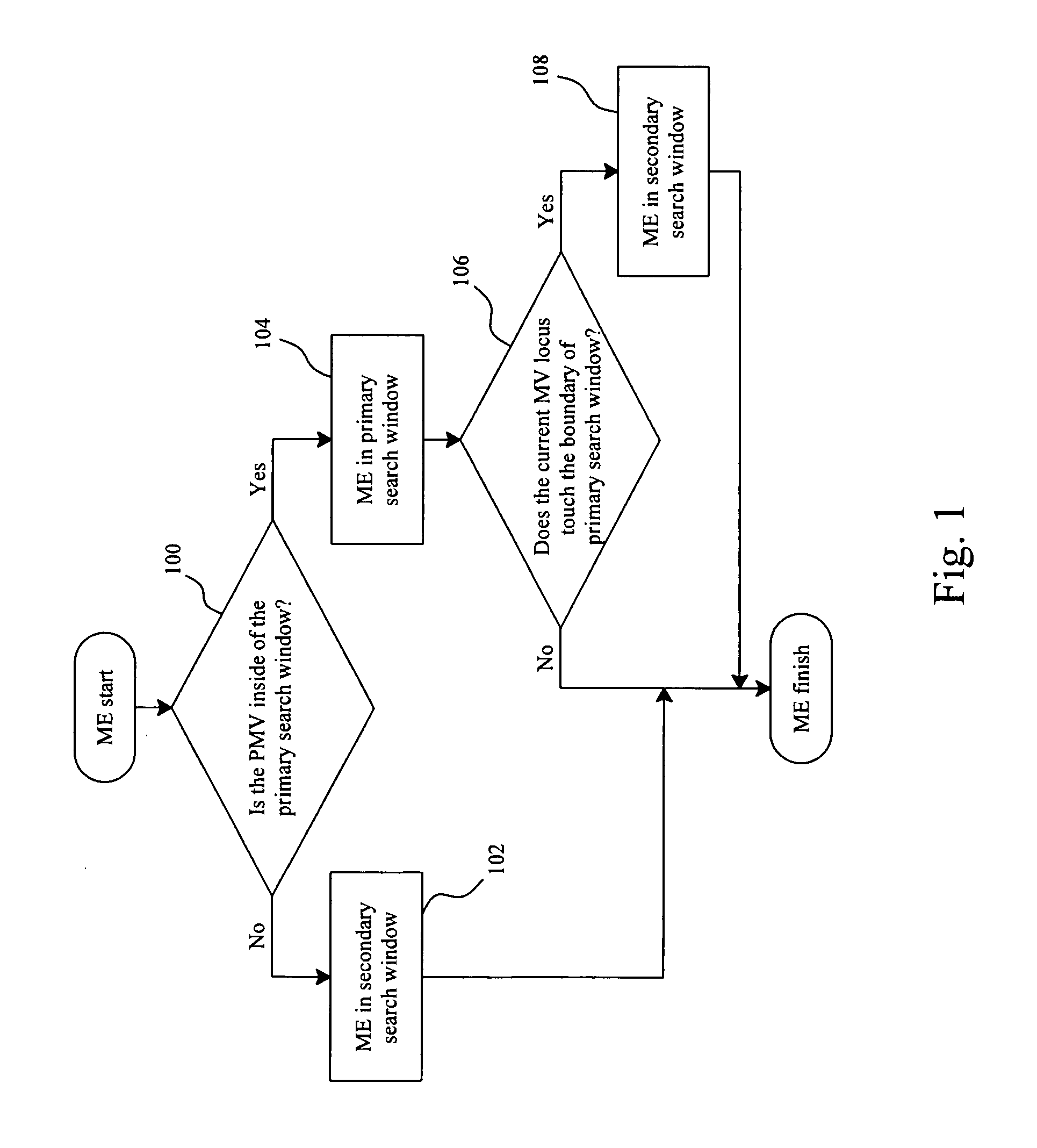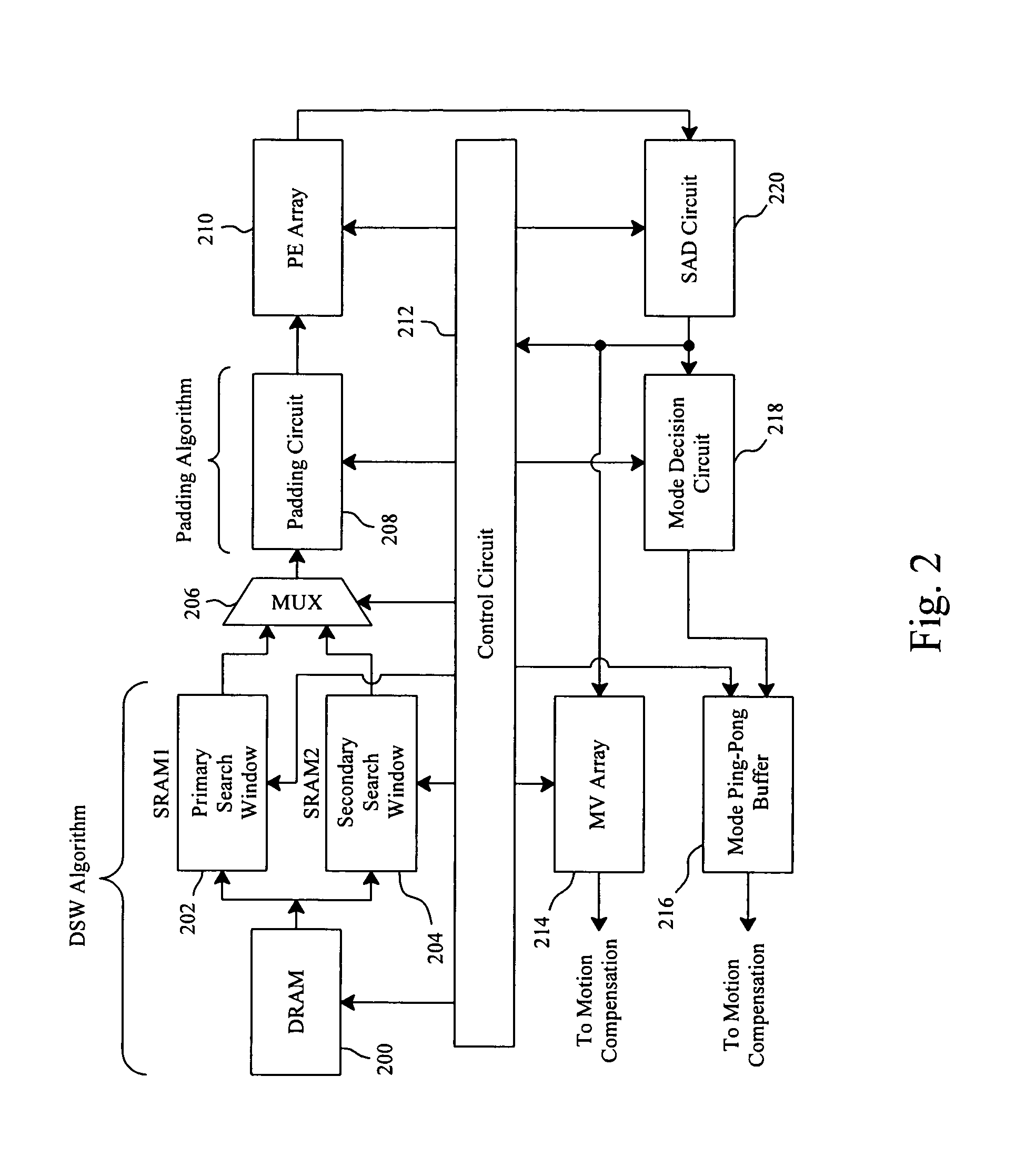Motion estimation with dual search windows for high resolution video coding
a motion estimation and high-resolution video technology, applied in the field of motion estimation with dual search windows for high-resolution video coding, can solve the problems of power consumption and cost, present solutions for data reusability, and increase the cost of motion estimation, so as to reduce the external memory bandwidth requirement, reduce the size of the on-chip memory, and reduce the effect of external memory bandwidth requirements
- Summary
- Abstract
- Description
- Claims
- Application Information
AI Technical Summary
Benefits of technology
Problems solved by technology
Method used
Image
Examples
Embodiment Construction
[0025]The center-biased motion estimation algorithms are developed based on the observation that most of motion vectors are located near the center-point of the search window. For example, in cases of Diamond Search (DS) and Small Diamond Search (SDS), more than 98% MVs are located within ±32 search range. Hence, ±32 search range can be used for a primary window to save the external memory access. When a motion vector is out of the primary window, a secondary window is loaded for further search.
[0026]FIG. 1 provides a flowchart of motion estimation using DSW algorithm. The step 100 is to determine whether a Predicted Motion Vector (PMV) is inside of a primary window or not. The PMV is used to determine an initial search point. If the PMV is not inside of the primary window, then a secondary search window is loaded in the step 102, and motion estimation is performed in the secondary window. The ME finishes after the step 102. If the PMV is inside of the primary window, the primary wi...
PUM
 Login to View More
Login to View More Abstract
Description
Claims
Application Information
 Login to View More
Login to View More - R&D
- Intellectual Property
- Life Sciences
- Materials
- Tech Scout
- Unparalleled Data Quality
- Higher Quality Content
- 60% Fewer Hallucinations
Browse by: Latest US Patents, China's latest patents, Technical Efficacy Thesaurus, Application Domain, Technology Topic, Popular Technical Reports.
© 2025 PatSnap. All rights reserved.Legal|Privacy policy|Modern Slavery Act Transparency Statement|Sitemap|About US| Contact US: help@patsnap.com



